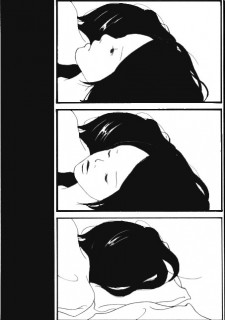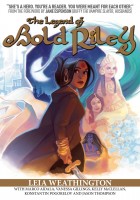 Although I’ve continued to review the new volumes of the series as they are released, last year I wrapped up my Blade of the Immortal monthly review project. Because I enjoyed the project, which took me nearly two years to complete, I started to look for a new one to take its place. Ultimately, I decided I wanted readers of Experiments in Manga to have some input in which manga I would tackle next and so put it up for a vote. Out of the five options that I narrowed it down to, by far the most popular choice was what I called “Year of Yuri.”
Although I’ve continued to review the new volumes of the series as they are released, last year I wrapped up my Blade of the Immortal monthly review project. Because I enjoyed the project, which took me nearly two years to complete, I started to look for a new one to take its place. Ultimately, I decided I wanted readers of Experiments in Manga to have some input in which manga I would tackle next and so put it up for a vote. Out of the five options that I narrowed it down to, by far the most popular choice was what I called “Year of Yuri.”
Over the course of twelve months, I reviewed twelve different comics and manga with yuri and/or lesbian themes. My intention was to feature a wide variety of genres, demographics, and styles. I think I was fairly successful in that. Most of the stories were based in reality, but there was a bit of fantasy, too. Some were erotic while others were very chaste. There were first loves and failed loves, healthy relationships and relationships that did more harm than good, humor and nostalgia, lightheartedness and seriousness, stories about school girls and stories about grown women, and more.
Whereas the Blade of the Immortal project focused on a single series, the Year of Yuri project allowed me to explore a range of titles which was interesting to do. Granted, with only twelve reviews, I could only begin to scratch the surface of the entire realm of possibilities. But hopefully I featured at least one manga or comic that sparked someone’s interest. I enjoyed having a project to work on from month to month and had fun selecting the comics and manga that I would review. Now that my Year of Yuri monthly review project has concluded, I’ll once again be turning to the readers of Experiments of Manga to help choose my next project. Another poll will be opened in the very near future, so stay tuned!
The links to all of my Year of Yuri manga reviews can be found below. I have also conveniently added a Year of Yuri tag to all of the reviews to pull them all together and for even greater ease of access. While I’ll no longer be focusing on yuri and lesbian comics as part of a monthly review project, I will continue to read and review them, so expect to see more quick takes and in-depth reviews in the future. I hope you all enjoyed this project as much as I did!
Year of Yuri reviews:
12 Days by June Kim
Before You Go by Denise Schroeder
Between the Sheets by Erica Sakurazawa
Blue by Kiriko Nananan
Gakuen Polizi, Volume 1 by Milk Morinaga
Kisses, Sighs, and Cherry Blossom Pink by Milk Morinaga
The Legend of Bold Riley created by Leia Weathington
Maka-Maka: Sex, Life, and Communication, Volume 1 by Torajiro Kishi
Revolutionary Girl Utena: The Adolescence of Utena by Chiho Saito
S.S. Astro: Asashio Sogo Teachers’ Room, Volume 1 by Negi Banno
Sweat & Honey by Mari Okazaki
Whispered Words, Omnibus 1 by Takashi Ikeda




